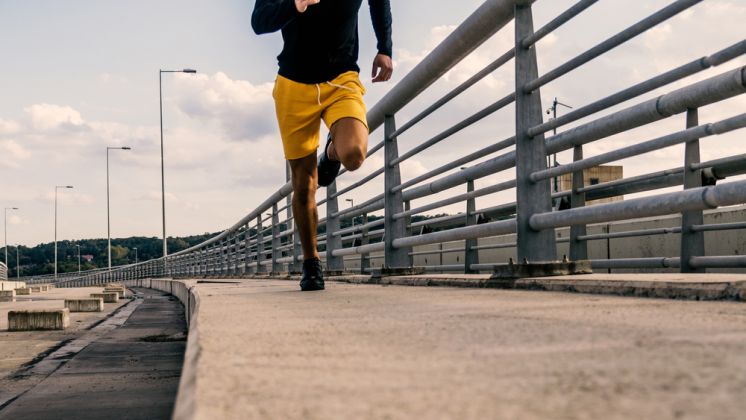The Basics Of Running Technique Explained
Confused by cadence? Puzzled by pronation? All will be made clear with our jargon buster

When you first start running, the chances are that you won’t be overly concerned about the finer points of your technique. When your legs are screaming and your lungs are burning, your ground contact time is the furthest thing from your mind.
However, once you gain experience, or perhaps start to suffer from injuries, you may develop a healthy interest in how you run. Generally, the golden rule is if it ain’t broke don’t fix it – tinkering with your running technique for no good reason is unwise – but if you’re trying to fix recurring niggles or improve your running efficiency and speed, it can be worth changing certain aspects of your running style.
At that point it’s worth discussing your aims with an expert – a physio or running coach – but in the course of looking into technique you’ll also encounter some pretty impenetrable jargon. To help you out on that front, Coach has enlisted Saucony UK coach James Thie to explain what these technical terms mean, why they matter and, where appropriate, what you might want to do about them. But first, a quick note on how to get a look at your running style.
“You can go down to the nearest running store for a gait analysis,” says Thie. “Alternatively, the DIY method is to go to your local park or gym treadmill with a smartphone and film yourself running from the front, back and side. Look at the number of steps you take, your time on the ground and the position of your foot strike, as well as the movement and position of your body on each foot strike.” This might help you identify a problem, we’d still recommend getting an expert to check out your gait if possible.
Cadence
What it means: The number of times your foot strikes the ground in a given time period.
Why it matters: The key is finding the most efficient and effective cadence for yourself. Too few foot strikes means you are running too slowly but taking too many steps is not sustainable, so it’s about getting to grips with what is optimal for you and the race distance.
Over-striding
What it means: The foot landing too far away from your centre of weight.
Get the Coach Newsletter
Sign up for workout ideas, training advice, reviews of the latest gear and more.
Why it matters: Over-striding puts additional stress on the body and also negatively impacts your running efficiency.
What to do about it: Maintain good posture – working on your core stability can help you to remain upright even when fatigued. Think about your footstrike (explained below) – it can help to listen to the contact, although it’s best for an expert to guide you through this in person.
Footstrike – heel, forefoot, midfoot
What it means: The part of the foot that makes contact with the ground first.
Why it matters: Everyone will have a slightly different footstrike. From a coach’s perspective the midfoot is often best for absorbing the impact but this depends on the speed you’re running. To work out your footstrike, look at the wear on the soles of your shoes, listen to your footstrikes or get gait analysis.
Pronation
What it means: Pronation is the body’s way of absorbing the impact forces through natural movement of the foot, so it is a good thing!
Why it matters: Too little or too much (under- and over-pronating) can cause issues.
What to do about it: Running shoes are all different, so get advice from an expert to be sure you are wearing a shoe that supports or promotes your natural running gait.
See related :
Ground contact time
What it means: Time spent on ground per footstrike.
Why it matters: Spending too much time on the ground will often mean that you are running against your own forces and aren’t strong enough to get the right rebound.
What to do about it: Work on engaging your glutes and core with running drills such as high knees, skipping and heel flicks.
Vertical oscillation
What it means: The opposite to spending too much time on the ground is spending too much time in the air – bouncing too high.
Why it matters: Too much height means wasted energy spent not going in the direction you want.
What to do about it: Adopt a slight lean forwards when you run so you naturally want to fall into the next footstrike, rather than just bobbing up and down.

Nick Harris-Fry is a journalist who has been covering health and fitness since 2015. Nick is an avid runner, covering 70-110km a week, which gives him ample opportunity to test a wide range of running shoes and running gear. He is also the chief tester for fitness trackers and running watches, treadmills and exercise bikes, and workout headphones.









